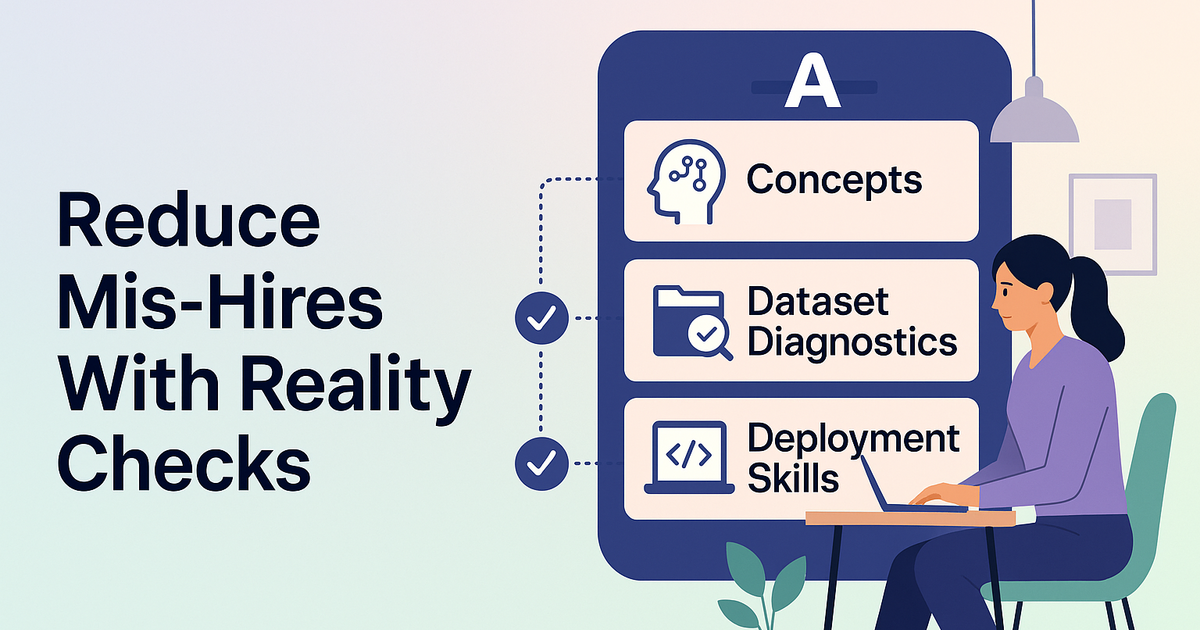Top Misconceptions About AI Hiring That Need to Be Debunked


More resumes, higher salaries, bigger recruiting funnels-conventional wisdom says these levers guarantee stronger AI teams. Yet the gulf between what decision-makers believe and what actually drives successful AI projects keeps widening. Each misaligned hire drains budget, stalls sprints, and forces CTOs to spend late nights triaging brittle models instead of shipping features. Behind the scenes, technical debt piles up, product launches slip, and already-thin teams burn out. The good news: once you separate AI myths from reality, a clear, repeatable hiring path emerges one that puts you back in control of timeline, cost, and quality. This article closes that gap with a new framework for sourcing and verifying elite AI talent for good.
Most conversations blame market scarcity for every failed machine-learning initiative. In truth, the core issue is broken verification.
When the vetting stage is porous, even an ocean of applicants can’t prevent costly mis-hires. Recognizing this verification mirage is the first step toward dismantling artificial intelligence misconceptions around “talent scarcity.”
Layer 1: Core-Concept Stress Test
Ask candidates to explain trade-offs among model complexity, interpretability, and latency then describe where they’ve made that call under production constraints.
Layer 2: Dataset Diagnostics Drill
Provide a messy dataset and evaluate how quickly they uncover bias sources, outlier clusters, and privacy pitfalls. This flushes out AI facts vs myths about “just feed more data.”
Layer 3: Deployment & Monitoring Deep-Dive
Require a walk-through of their CI/CD pipeline for ML, including rollback strategies and drift alerts. Many common AI misunderstandings surface here, revealing who has operated models at scale versus who stopped at Jupyter notebooks.
Because each layer mirrors a real production milestone, you gain evidence of end-to-end capability not just algorithm trivia.
Align every open role to the dollar impact of failure: model accuracy, compliance, or infra cost overruns. This ensures screening depth matches project stakes.
Platforms such as Expertshub.ai embed the 3-Layer Reality Check inside a multi-stage evaluation pipeline, delivering pre-vetted AI experts within days rather than months. By outsourcing the heaviest lift proof of competence-you cut internal interview hours while boosting certainty.
Start with a bounded deliverable (e.g., feature-importance dashboard) to validate collaboration style and documentation quality. If the pilot succeeds, roll into long-term scopes with confidence.
Once verification rigor is institutionalized, hiring transforms from reactive fire-drill to proactive growth lever.
In short, rigorous verification repays itself through smoother releases, higher team morale, and a sharper competitive position-a reality that completely overturns prevailing AI myths.
Q1: Does rigorous vetting slow hiring?
A: Properly structured, it accelerates results by preventing restarts and mis-hires. Pre-vetted networks handle the heavy lift up front.
Q2: How often should talent be re-evaluated?
A: At every major architectural shift or annually-skills and tooling evolve fast in AI.
Q3: What roles benefit most from this model?
A: High-impact positions: ML engineers, data scientists, MLOps specialists, where failure directly affects revenue or compliance.
Ready to close the gap between AI facts vs myths and build with certainty? Browse Talent Profiles from pre-vetted experts today.


